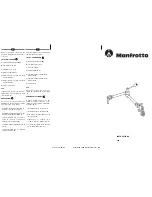
2.1.2 Installation of a wireless system
In principle, in an ideal situation, the transmitter and the router resp. the base station should be within
‘eyesight’ to achieve an optimal strength of the signal. If that is not possible, a more appropriate location
can be found using the features of the base station EE242, with the support of an amplifying router. The
changes of the strength of the transmitter signal are indicated in a percentage (%), by the signal indica-
tor on the web server of the EE242.
If obstacles interfere with radio communication between the transmitter and the base station, routers
can be used to circumvent these obstacles and extend the distance between the transmitter and base
station. A "series connection" of routers is possible without any problems.
Optimal positioning of a router:
• To reduce cost several different transmitters can be channeled over one router.
• The router should always be aligned with the weakest transmission connection.
• A maximum of 10 wireless connections per router / base station; see outline 2.1.3.
2.1.3 Example for a wireless measurment setup
SENSING PROBE
TRANSMITTER
(max. 500 pcs)
ROUTER
(max. 60 pcs)
BASE STATION
max. 10 transmitters
*) Range of coverage: up to 60m within buildings / up to 1.000m free flied (without obstacles)
*)
max. 10 transmitters or routers
2.2 Components of the series EE240
2.2.1 Sensing Probe
There are several different sensing probes available, for the measurement of temperature, relative
humidity, and carbon dioxide (CO2). Each sensing probe has its calibration data stored internally, is
therefore 100% interchangeable, and can be installed remotely with a sensor cable at up to 10m (33ft).
For a detailed technical description, see chapter 3.2.
2.2.2 Transmitter
The transmitter powers the sensing probe and transmits wirelessly the measurement data. Each trans-
mitter can be equipped with a maximum of three sensing probes. For a detailed technical description,
see chapter 3.2.
6
Operating manual Series EE240 Wireless sensor







































